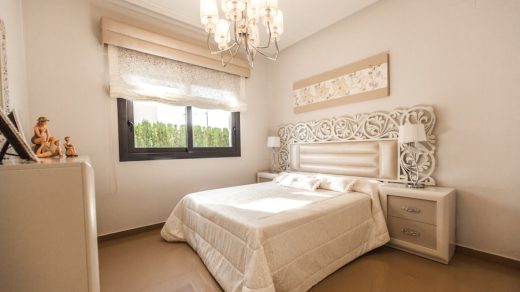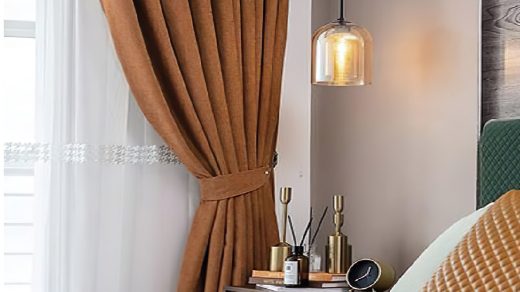Top 10 Creative Living Room Lighting Ideas: Illuminate Your Space with Style
Statement lighting serves as a focal point in a room, often transforming an ordinary space into something extraordinary. These fixtures are designed not just to illuminate but to captivate and inspire. A well-chosen statement light can reflect the personality of the homeowner, showcasing their taste and style.
For instance, a grand chandelier made of crystal can evoke a sense of luxury and elegance, while a bold, oversized pendant light in a vibrant color can add a playful touch to a modern kitchen. The key to effective statement lighting lies in its ability to draw the eye and create a conversation starter, making it an essential element in interior design. In addition to aesthetics, statement lighting can also influence the mood of a space.
A dramatic fixture can create an atmosphere of sophistication in a dining room, encouraging intimate gatherings and memorable dinners. Conversely, a quirky, artistic lamp can inject energy into a creative workspace, inspiring innovation and productivity. The interplay between form and function is crucial; while these lights are often visually striking, they must also provide adequate illumination for the intended space.
Designers often recommend considering the scale of the room when selecting statement lighting, ensuring that the fixture complements rather than overwhelms the surrounding decor.
Task Lighting
Task lighting is essential for any space where specific activities are performed, such as reading, cooking, or working. This type of lighting is designed to provide focused illumination that enhances visibility and reduces eye strain. For example, under-cabinet lights in a kitchen illuminate countertops, making food preparation safer and more efficient.
Similarly, a well-placed desk lamp can create an ideal workspace for studying or completing projects, allowing individuals to concentrate without distractions from ambient light. The effectiveness of task lighting hinges on its placement and intensity. Adjustable fixtures, such as swing-arm lamps or track lighting, offer versatility by allowing users to direct light precisely where it is needed.
In addition to functionality, task lighting can also contribute to the overall design aesthetic of a room. A sleek, modern desk lamp can complement contemporary decor, while a vintage-style reading lamp can enhance a cozy library nook. By integrating task lighting thoughtfully into a space, homeowners can create environments that are both practical and visually appealing.
Accent Lighting
Accent lighting plays a pivotal role in highlighting specific features within a room, such as artwork, architectural details, or decorative elements. This type of lighting is typically more focused and intense than ambient light, drawing attention to particular areas without overwhelming the overall illumination of the space. For instance, wall-mounted sconces can be used to illuminate paintings or photographs, creating a gallery-like atmosphere in a living room or hallway.
Similarly, spotlights can be directed at sculptures or unique furniture pieces to enhance their visual impact. The strategic use of accent lighting can also add depth and dimension to a room. By layering different types of lighting—ambient, task, and accent—designers can create a dynamic environment that feels both inviting and sophisticated.
For example, in a dining area, pendant lights above the table can provide ambient light while accent lights highlight decorative elements on shelves or sideboards. This layered approach not only enhances the aesthetic appeal but also allows for greater flexibility in adjusting the mood of the space for various occasions.
Ambient Lighting
Ambient lighting Vis24 serves as the foundation of any well-lit room, providing general illumination that allows occupants to navigate and enjoy the space comfortably. This type of lighting is typically soft and diffused, creating an inviting atmosphere without harsh shadows or glaring brightness. Common sources of ambient light include ceiling-mounted fixtures, chandeliers, and floor lamps that distribute light evenly throughout the area.
The goal is to create a warm and welcoming environment that encourages relaxation and social interaction. Incorporating ambient lighting effectively requires careful consideration of the room’s layout and purpose. For instance, in a living room designed for entertaining, multiple sources of ambient light can help establish a cozy atmosphere while ensuring that all areas are adequately illuminated.
Dimmers are often recommended for ambient lighting as they allow homeowners to adjust brightness levels according to the time of day or activity taking place. By combining various ambient light sources—such as recessed lights with table lamps—designers can achieve a harmonious balance that enhances both functionality and aesthetics.
Natural Lighting
Natural lighting is an invaluable asset in interior design, offering numerous benefits beyond mere illumination. Sunlight has been shown to improve mood and productivity while reducing energy costs associated with artificial lighting. Large windows, skylights, and glass doors are common features that maximize natural light in a home.
For example, an open-concept living area with expansive windows not only floods the space with daylight but also creates a seamless connection between indoor and outdoor environments. To optimize natural lighting, homeowners should consider factors such as window placement, size, and treatment options. Light-colored walls and reflective surfaces can amplify sunlight’s effects, making spaces feel larger and more open.
Additionally, strategically placed mirrors can bounce natural light around the room, enhancing brightness without relying solely on artificial sources. Incorporating plants near windows can further enhance the ambiance by adding life and color while benefiting from the sunlight streaming in.
DIY Lighting
Adding Character with Upcycled Materials
For instance, transforming an old glass jar into a pendant light can add character to a kitchen or dining area while providing functional illumination.
Budget-Friendly Alternatives
Moreover, DIY lighting projects can be budget-friendly alternatives to purchasing new fixtures. By sourcing materials from thrift stores or using items already on hand, homeowners can create stunning pieces without breaking the bank. Online tutorials and design blogs provide inspiration and step-by-step guidance for various projects, making it accessible for individuals with varying skill levels.
Endless Possibilities in Home Decor
Whether it’s creating a statement chandelier from recycled materials or designing simple wall sconces from wood and fabric, DIY lighting allows for endless possibilities in home decor.
Statement Lampshades
Statement lampshades serve as an excellent way to elevate existing light fixtures without requiring extensive renovations or replacements. A bold lampshade can transform an ordinary lamp into a striking design element that complements the overall decor of a room. For example, a vibrant patterned shade can add a pop of color to a neutral space or introduce texture through materials like woven rattan or silk.
When selecting statement lampshades, it’s essential to consider both size and shape in relation to the base of the lamp as well as the surrounding decor. A large drum shade may work beautifully over a substantial floor lamp in a spacious living room but could overwhelm a small bedside table lamp. Additionally, mixing different styles—such as pairing an industrial base with an elegant fabric shade—can create an intriguing contrast that enhances visual interest within the space.
Smart Lighting
Smart lighting technology has revolutionized how homeowners approach illumination in their spaces. With the ability to control lights remotely via smartphones or voice-activated devices, smart lighting offers unparalleled convenience and customization options. Homeowners can adjust brightness levels, change colors, or set schedules for their lights—all from the comfort of their couch or while away from home.
Beyond convenience, smart lighting systems can contribute significantly to energy efficiency. Many smart bulbs are designed to consume less power than traditional incandescent bulbs while providing comparable brightness levels. Additionally, features such as motion sensors ensure that lights are only activated when needed, reducing unnecessary energy consumption.
As technology continues to advance, smart lighting solutions are becoming increasingly integrated into home automation systems, allowing for seamless control over various aspects of home environments—from security features to climate control—creating truly intelligent living spaces that cater to modern lifestyles.



